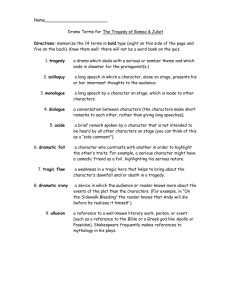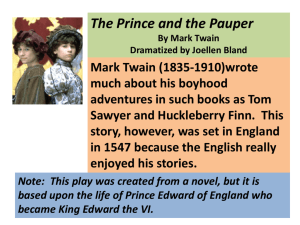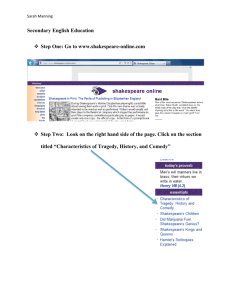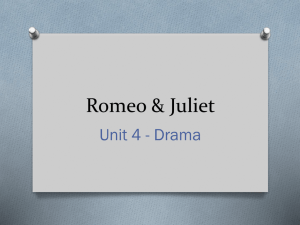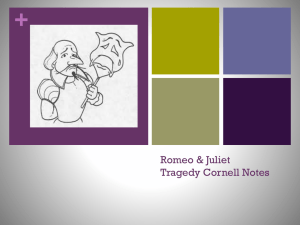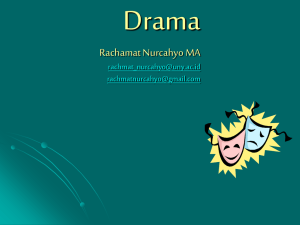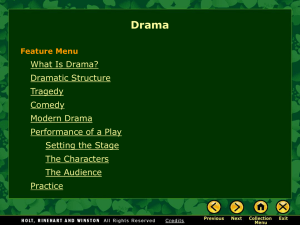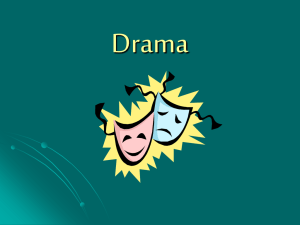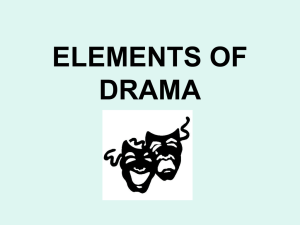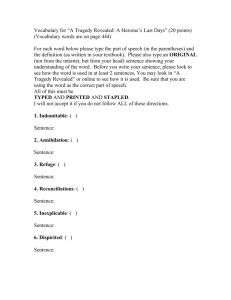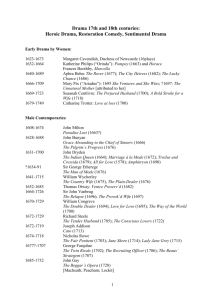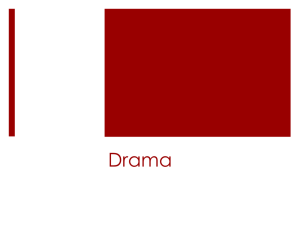Romeo & Juliet: Drama & Tragedy Notes
advertisement
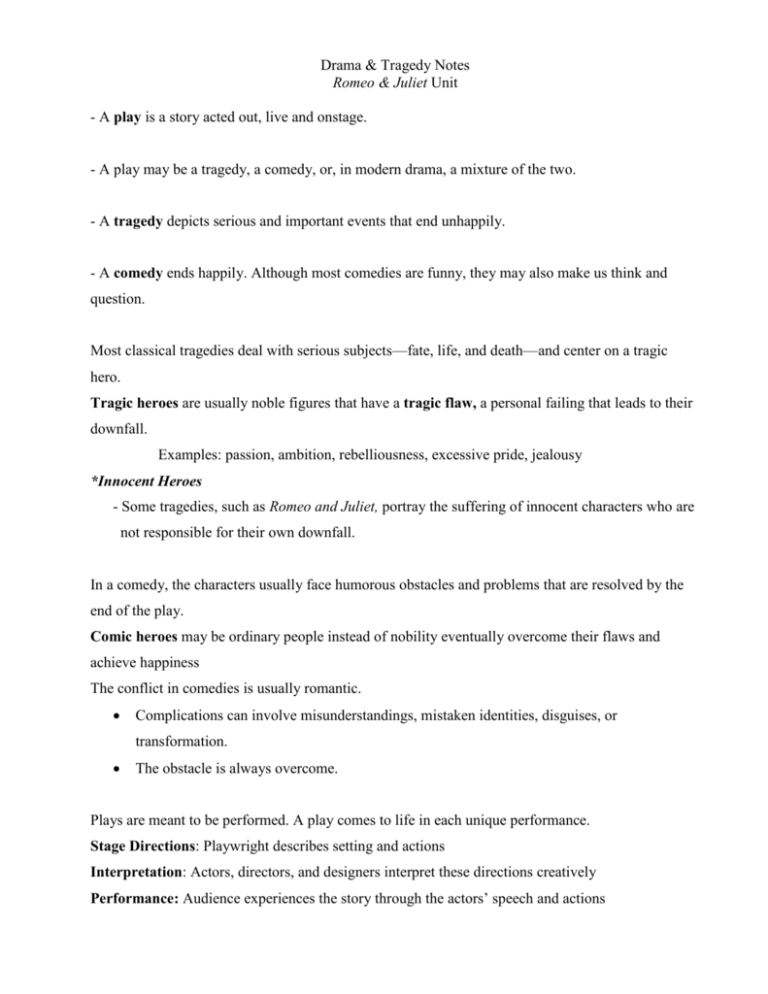
Drama & Tragedy Notes Romeo & Juliet Unit - A play is a story acted out, live and onstage. - A play may be a tragedy, a comedy, or, in modern drama, a mixture of the two. - A tragedy depicts serious and important events that end unhappily. - A comedy ends happily. Although most comedies are funny, they may also make us think and question. Most classical tragedies deal with serious subjects—fate, life, and death—and center on a tragic hero. Tragic heroes are usually noble figures that have a tragic flaw, a personal failing that leads to their downfall. Examples: passion, ambition, rebelliousness, excessive pride, jealousy *Innocent Heroes - Some tragedies, such as Romeo and Juliet, portray the suffering of innocent characters who are not responsible for their own downfall. In a comedy, the characters usually face humorous obstacles and problems that are resolved by the end of the play. Comic heroes may be ordinary people instead of nobility eventually overcome their flaws and achieve happiness The conflict in comedies is usually romantic. Complications can involve misunderstandings, mistaken identities, disguises, or transformation. The obstacle is always overcome. Plays are meant to be performed. A play comes to life in each unique performance. Stage Directions: Playwright describes setting and actions Interpretation: Actors, directors, and designers interpret these directions creatively Performance: Audience experiences the story through the actors’ speech and actions A stage has its own coordinates. upstage stage right stage left downstage audience The stage’s set might be realistic and detailed, abstract or minimal. A set can be changed from scene to scene—sometimes with machinery and sometimes with just a change in lighting. Costumes tell us about the characters and the time and place. They can be elaborate or minimal. Props are items that the characters carry or handle onstage. Characters’ speech takes the form of Dialogue—conversation between characters Monologue—a long speech by one character to one or more other characters Soliloquy—a speech by a character alone onstage, speaking to himself or herself or to the audience Sometimes a character speaks to the audience or to another character in an aside, dialogue that is not supposed to be heard by the other characters onstage. Tragedy—a narrative about serious and important events that lead to a disastrous outcome A tragedy usually ends with the deaths of the main characters. • Their downfall may be the result of: 1. character flaws that lead to unwise actions 2. fate (events beyond the characters’ control) 3. a little bit of both Shakespeare’s tragic plays usually follow a 5-part sequence: ACT III ACT II ACT IV ACT I Exposition - establishes setting - introduces characters ACT V - explains background - introduces characters’ main conflict Rising action consists of a series of complications that occur when the main characters take action to resolve their problems. The crisis, or turning point, is the moment when a choice made by the main characters determines the direction of the action. In a tragedy, the action heads downward, toward disaster. In a comedy, the action heads upward, toward a happy ending. The crisis is the point when all the forces of conflict come together to create the greatest drama and tension of the play. Falling action presents events that result from the action taken at the turning point. With each event, we see the characters falling deeper into tragedy. Climax is the moment of greatest emotional intensity in the plot. In a tragedy, the final and greatest climax occurs near the end of the play and usually consists of the deaths of the main characters. Resolution (or denouement) is the final part of the play. All the loose ends are tied up and the play is over.
